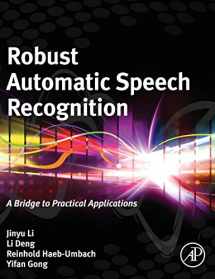
Robust Automatic Speech Recognition: A Bridge to Practical Applications
Book details
Summary
Description
Robust Automatic Speech Recognition: A Bridge to Practical Applications establishes a solid foundation for automatic speech recognition that is robust against acoustic environmental distortion. It provides a thorough overview of classical and modern noise-and reverberation robust techniques that have been developed over the past thirty years, with an emphasis on practical methods that have been proven to be successful and which are likely to be further developed for future applications. The strengths and weaknesses of robustness-enhancing speech recognition techniques are carefully analyzed. The book covers noise-robust techniques designed for acoustic models which are based on both Gaussian mixture models and deep neural networks. In addition, a guide to selecting the best methods for practical applications is provided. The reader will:
- Gain a unified, deep and systematic understanding of the state-of-the-art technologies for robust speech recognition
- Learn the links and relationship between alternative technologies for robust speech recognition
- Be able to use the technology analysis and categorization detailed in the book to guide future technology development
- Be able to develop new noise-robust methods in the current era of deep learning for acoustic modeling in speech recognition


We would LOVE it if you could help us and other readers by reviewing the book
Book review



